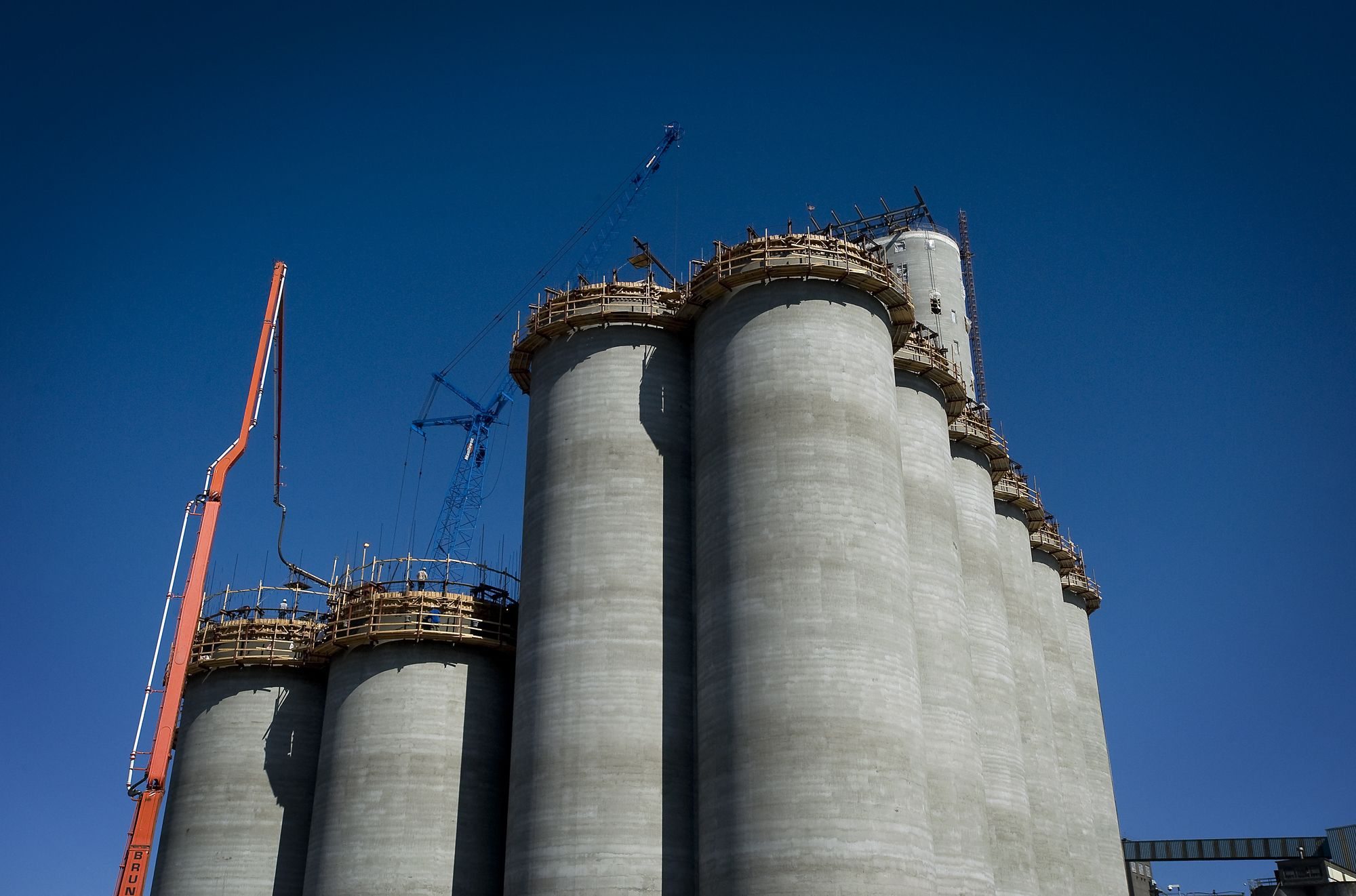It scrapes the sky, but it’s no towering office building.
Nonetheless, the new grain silo rising at the Port of Vancouver is likely the tallest structure in Clark County.
The silo, made of concrete and reinforced steel, climbs more than 300 feet — the equivalent of roughly 20 stories. “I don’t think any of the (Vancouver) downtown structures comes even close,” said Curtis Shuck, the port’s director of economic development and facilities.
The looming silo was built using the “slipform” method of construction, in which concrete is poured into a continuously -moving form. “They actually jack it up and the whole thing rises at about one foot per hour,” Shuck said. “It’s the tallest slipform structure in North America.”
It’s also part of a larger
$72 million project launched by United Grain Corp. to boost the company’s export capacity to handle corn and soybeans. Driving United Grain’s pursuit of the project is China’s rising middle class, Shuck said. With more Chinese people eating meat, demand is high for corn and soybeans, which serve as feed grains for livestock.
The port’s elected three-member board of commissioners unanimously approved the project in January. Since then, crews have torn down two buildings at the port’s Terminal 2 — with one more to go — and have been busy erecting the slipform silo and building a storage facility comprised of 24 grain silos.
The silo, which will be used to remove debris from the loads of corn and soybean, is all but complete. Shuck said crews are now installing the machinery that will enable it to load the corn and soybeans — hauled into the port by train from other parts of the U.S. — onto ships bound for Asia.
A nearby 24-silo storage facility, which crews are now assembling, will provide an additional 60,000 metric tons of storage space for corn and soybeans, or roughly 2 million bushels.
United Grain, a subsidiary of Japanese conglomerate Mitsui Group, already ships 3 million tons of wheat from Terminal 2, about 16 percent of the country’s crop.
Its current project, to be completed in the fall of 2012, created 240 temporary construction jobs. When it’s finished, the new grain handling facility will employ a few permanent, full-time workers.
The company’s expansion into the corn-and-soybean export business provides several other benefits, Shuck said, including allowing the port to move ahead with its $150 million West Vancouver Freight Access project.
The project aims to increase the port’s rail track from 16.9 miles to more than 44 miles, adding capacity to handle freight and increasing the speed at which cargo moves along the BNSF Railway and Union Pacific main lines. Those main lines link the Pacific Northwest to major rail hubs in Chicago and Houston.
“Faster freight and more of it means a lower cost, which means global competitiveness,” Shuck said.
Shuck said port tenant CalPortland benefits from the silo project because United Grain is purchasing all of its ready-mix concrete from CalPortland, a provider of building materials.
Perhaps the most obvious impact of the United Grain project is the fact that you can’t miss it as you trundle along West Mill Plain Boulevard through the port district.
As Shuck put it, “We’re actually modifying the Vancouver skyline.”




